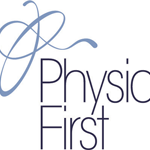ANKLE LATERAL LIGAMENT SPRAIN
Welcome to Hart Physio’s patient resource about Lateral Ligament Sprains in an ankle.
What is a Sprained Ankle?
A sprained ankle occurs when your ankle ligaments are overstretched. Ankle sprains vary in their severity, from mild to severe complete ligament ruptures, avulsion fractures or broken bones. A history of your ankle rolling is the ingredient in suspecting a sprained ankle. At the time of the injury you may hear a popping or cracking sound and will notice swelling, bruising and ankle pain. Lateral or medial ligament sprains are usually acutely tender over the injured ligament.
Depending on the severity of your ankle sprain, you may have trouble walking or standing on your foot. In these cases, crutches, strapping or a walking boot may be necessary to help you to mobilise throughout the day.
In more severe cases, there may be sharp pain deep in the ankle joint associated with a talar dome fracture or pain between your lower shin bones, which may be a syndesmosis or high ankle sprain.
At Hart Physio our team are experts in the assessment and diagnosis of ankle sprains. Your history and a thorough clinical examination will determine the severity of your sprained ankle. If required, you may be referred for a X-ray, CT scan or MRI to confirm or exclude specific ligament or bone injuries.
Your ankle ligaments attach from bone to bone and passively limit the motion available at each joint. On the outside of the ankle lie the lateral ligaments, which are the most frequently injured in an ankle sprain. These include the:
- anterior talo-fibular ligament (ATFL)

- calcaneofibular ligament (CFL)
- posterior talo-fibular ligament (PTFL)
The medial (inside of ankle) ligament is the much stronger ligament and is called the deltoid.
Higher ankle sprains involve the inferior tibiofibular ligament and syndesmosis. These are the more disabling ankle injuries and are often misdiagnosed as the more simple sprained ankle.
Treatment for Sprained Ankle
Unfortunately, a sprained ankle can increase your risk of re-injury as much as 40-70%, but the correct post-injury rehabilitation exercises significantly decreases the risk.
There are essential treatment aims that need to be covered to effectively rehabilitate your sprained ankle and prevent recurrence.
Physiotherapy Treatment Aims
- Injury Protection, Pain Relief & Control Inflammation
- Regain Full Range of Motion
- Strengthen your Ankle and Calf Muscles
- Restore Joint Proprioception & Balance
- Restore Normal Function
- Speed & Agility
- Sport-Specific Skills
- Graduated Training
- Return to Competition
Sprained Ankle Treatment Progressions
Your progress will depend on the initial extent of the injury and other factors determined with the assessment.
Phase 1 – Injury Protection: Pain Relief & Control Inflammation
As with most soft tissue injuries the initial treatment is PRICE – Protection, Rest, Ice, Compression and Elevation.
(Active) Rest: In the early phase you’ll most likely be unable to walk on your sprained ankle. Your first aim is active rest from pain-provoking postures and movements. This means that you should stop doing the movement or activity that provokes the ankle pain. Ice is a simple and effective modality to reduce your pain and swelling. Please apply for 20-30 minutes each 2 to 4 hours during the initial phase or when you notice that your injury is warm or hot.
Compression: A compression bandage, tubigrip compression stocking or taping will help to both support the injured soft tissue and reduce excessive swelling.
Elevation: Elevating your injured ankle above your heart will assist gravity to reduce excessive swelling around your ankle.
Your physiotherapist will utilise a range of pain relieving techniques, joint mobilisations, massage, strapping and acupuncture to assist you during this painful phase.
Anti-inflammatory medication and natural creams such as arnica may help reduce your pain and swelling. However, it is best to avoid anti-inflammatory drugs during the initial 48 to 72 hours when they may encourage additional bleeding. Most people can tolerate paracetamol as a pain reliever.
Phase 2: Regain Full Range of Motion
If you protect your injured ankle ligaments appropriately the torn ligaments will successfully reattach and heal a normal functional length. Mature scar formation takes at least six weeks. During this time period you should be aiming to optimally remould your scar tissue to allow for full functional ankle movement and prevent a poorly formed scar that will re-tear in the future.
It is important to lengthen and orientate your healing scar tissue via massage and exercises designed to address your joint range of motion, muscle length and normal neural tissue motion.
Phase 3: Muscle Strengthening
Your calf, ankle and foot muscles will require strengthening after an ankle sprain. These will be specific to the challenges your ankle will face in the future and reinforce where your ankle is weak.
Phase 4: Optimise Foot Biomechanics
Sprained ankles can occur from poor foot biomechanics eg flat foot or high arch. In order to prevent a recurrence, your foot arch and its control should be assessed by your physiotherapist. In some instances you may require a foot orthotic.
.
Phase 5: Restore High Speed, Power, Proprioception and Agility
Most sprained ankle injuries occur during high speed activities, which place enormous forces on your ankle and adjacent structures.
Balance and proprioception (the sense of the relative position of neighbouring parts of the body) are both known to be adversely affected by injuries such as a sprained ankle. To prevent a re-injury, both aspects need to be assessed and retrained.
Phase 6: Return to Sport
If you play sport, and depending on the demands of your chosen sport, you may require sport-specific exercises and a progressed training regime to enable a safe and injury-free return to your chosen sport.




